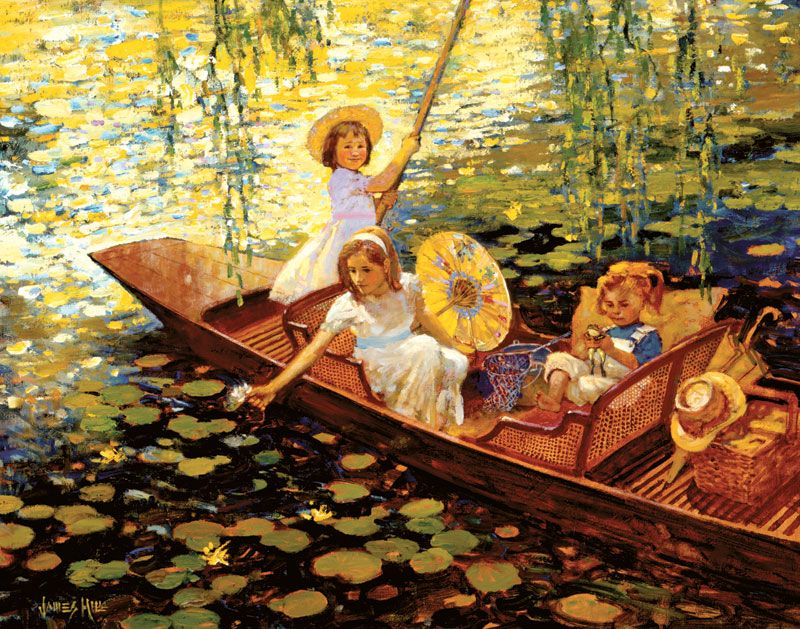Blog Post
Anne of Green Gables and the truth about the good old days
By Jonathon Van Maren
FIRST PUBLISHED ON UTOPIAN IDIOTS
My wife is an obsessive fan of Anne of Green Gables, the melodramatic and mischievous redhead from the Maritimes who captured the hearts of millions. A few years ago, hunting for some place to take her on a daytrip, I stumbled across a place I didn’t know existed: The home of L.M. Montgomery in Leaksdale, Ontario. It was in this house, it turns out, that she wrote most of the Anne books. I thought that a trip to Prince Edward Island was necessary to visit a place associated with Anne Shirley and her creator, but it is actually a little house in the forested countryside just north of Toronto, a short walk down the road from the Presbyterian church that her husband pastored, that is the birthplace of many of Montgomery’s works.
Anyone interested in Montgomery and her immortal characters should take the time to visit. You can enter the old church where her husband preached and sit in her pew. Just outside is a statue of Montgomery, sitting on a bench with a smile playing about her lips. Inside the house, the friendly tour guide let us sit on the couch where Montgomery did her writing and even let my wife play her ancient organ. Directly across the muddy road from the Montgomery house was a little green valley, crested by flaming trees garbed in all of autumn’s orange and crimson glory. This was the inspiration for Montgomery’s Rainbow Valley. As Montgomery described it: “The sun was setting over Rainbow Valley. The pond was wearing a wonderful tissue of purple and gold and green and crimson. A faint blue haze rested on the eastern hill, over which a great, pale, round moon was just floating up like a silver bubble.” It is all still there.
Montgomery could capture Canada’s natural beauty like few other writers could—and as someone who grappled with depression, she could also grasp its healing power. “It was November,” she wrote in one of her Anne books, “the month of crimson sunsets, parting birds, deep, sad hymns of the sea, passionate wind-songs in the pines. Anne roamed through the pineland alleys in the park and, as she said, let that great sweeping wind blow the fogs out of her soul.” To walk the same paths and see just what Montgomery saw, and then to read those lines—that is the way to fall in love with literature. Montgomery’s pages fairly breathe with the crisp breezes that caressed her upturned face, passed through her pen, and now refresh generations of readers.
But I believe it is the nostalgia that Montgomery captures that truly explains the ever-green nature of her storytelling. Anne’s journey from a little girl enraptured by the high drama of ordinary living through the perils of adolescence and culminating in the arrival of adulthood and, eventually, her own children—Montgomery tells this story in a way that can catch you off-guard, as if someone has reminded you suddenly how much time has passed and how many beautiful moments turned into memories before you had a chance to notice. Like in Anne of the Island, when the grown-up Anne looks at her bosom friend Diana, who has just become a mother—and is suddenly struck by how much time had slipped away, and how much it had taken with it: “Could this pale woman with the rapture in her eyes be the little black-curled, rosy-cheeked Diana she had played with in vanished schooldays? It gave her a queer, desolate feeling that she herself somehow belonged only in those past years and had no business in the present at all.”
Who cannot understand those few lines? Who has not flipped through an old photo album, looked up, and realized suddenly how many people have come and gone and changed and grown and thought with a sharp pang that isn’t quite pain but rather feels like it, that although we might not really want to go back in time, we still find ourselves desperately wishing we could crawl inside of one of those old memories and be there for just a moment, and feel all of those same feelings once again? That is nostalgia—the realization that the moment we are living in, right now, will probably be one of the “good old days” in just a moment or two—and few writers rendered the contradiction of that sense of sadly happy remembrance as well as Lucy Maud Montgomery.









I enjoyed this. Did you also know that Lucy Maud Montgomery and her husband lived in Norval, Ontario? You can visit the Lucy Maud Montgomery garden there.
https://gardenofthesenses.com/about/lucy-maud-montgomery/
As someone who has always been nostalgic, and now being the mother of a nostalgic five year old, I’ve come to realize this exact thing: the choices we make today are creating the “good old days” for our children and grandchildren. What a beautiful responsibility and opportunity!
Indeed!